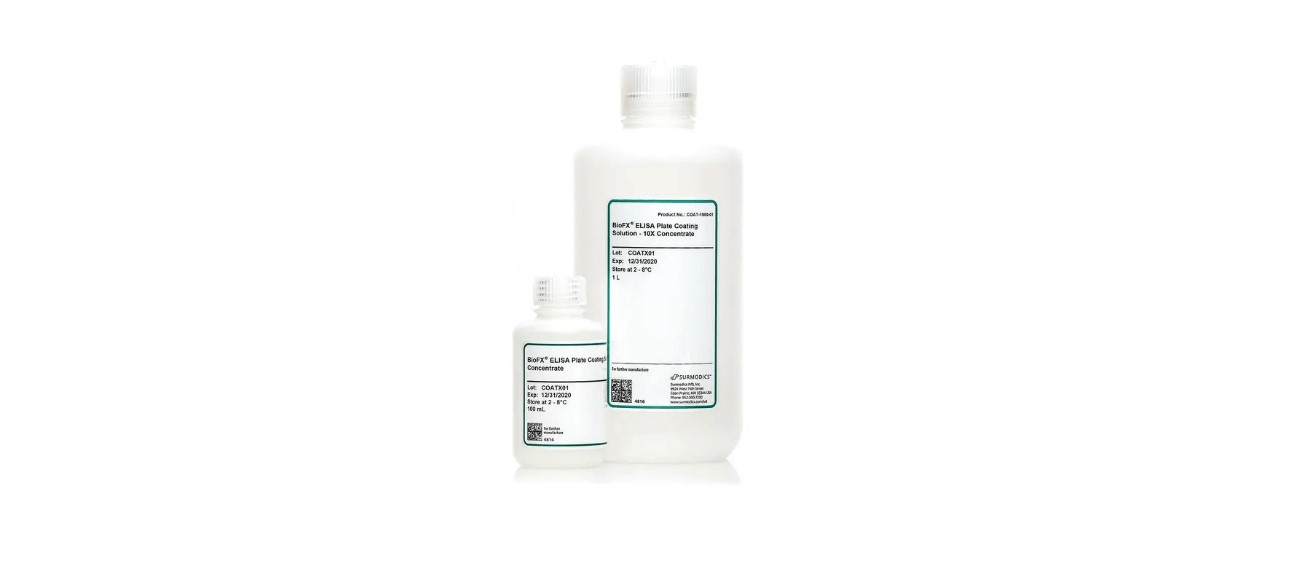
Elisa Coating Buffer 10x Concentrate
ELISA! You may have definitely heard this term if you work around enzyme-detecting methods. If you haven’t, you are at the right place. Here is everything that you need to know about ELISA and ELISA coating buffers.
What is ELISA?
ELISA stands for Enzyme-Linked-Immunosorbent Assay, a quick plate technique to detect enzymes. It is considered one of the highly sensitive and reproducible technologies.
When it comes to performing ELISA, it is simple, rapid, and easy to automate. Its reliability and reproducibility depends on the technique used and the utmost attention of the person performing.
In ELISA, antibodies are used to bind them to the targeted antigen on ELISA plate. It converts a substrate into a colored product when the targeted antigen is present.
In ELISA, we can put a variety of samples to the test. Although, all samples needed to be tested to get accurate results and quantitation.
Types of ELISAs
There are four types of assays in ELISA. Each one comes with its own advantages and disadvantages. However, they all follow the same basic strategy.
These four major types of ELISA assays are direct assay, indirect assay, sandwich assay, and competitive assay.
Direct Assay
With direct ELISA, the antigen gets immobilized directly on the ELISA plate. The target protein binds with a conjugated detection antibody, then the substrate is added, which produces a signal proportional to the amount of analyte. Direct ELISA is less specific, as only one antibody is used for detection.
Indirect Assay
Unlike direct assay, in this method, no chemiluminescent enzyme is present in the detecting antibody. Therefore, another antibody has to bind to the first one for detection. The steps involved in the indirect assay are very similar to the ones in the direct assay. However, it has higher sensitivity compared to direct assay.
Sandwich Assay
Sandwich ELISAs are more specific than direct and indirect assays. In this assay, two antibodies are used to sandwich the antigen. It is the most common type of ELISA. In a sandwich assay, the antibody is first immobilized to the substrate, and then antigen is added. It gets immobilized along with the capture antibody. The detection antibody is added over the substrate to bind the antigen. Then, the chemiluminescent enzyme may get directly conjugated with the detection antibody or another, similar to the indirect assay.
Competitive ELISA
This ELISA assay is more common for testing small molecules. Due to their small size, they are unsuitable for an efficient sandwich assay with two other antibodies. A conjugated antigen is used instead of a conjugated detection antibody to bind the antigen in the sample.
When To Use an ELISA Coating Buffer
ELISA coating buffer primarily uses immunoassay testing protocols for immobilizing proteins and antibodies on ELISA plates. To maximize specific binding in the solid phase, it may contain phosphates or carbonates. Thus, increasing the sensitivity and stability of the assay. Its ideal pH depends on the target antibody or protein. The concentration of the buffer can be adjusted via dilution to meet the experimental needs. In each assay, they help differently. For example, in a sandwich assay, ELISA coating buffers help immobilize the antigen or antibody coated on the plate.
In summary
Now that you are aware of ELISA and ELISA coating buffer, you can make a very informed choice of finding the right one for your needs. It is a complex process requiring expertise, experience, and attention to detail.






